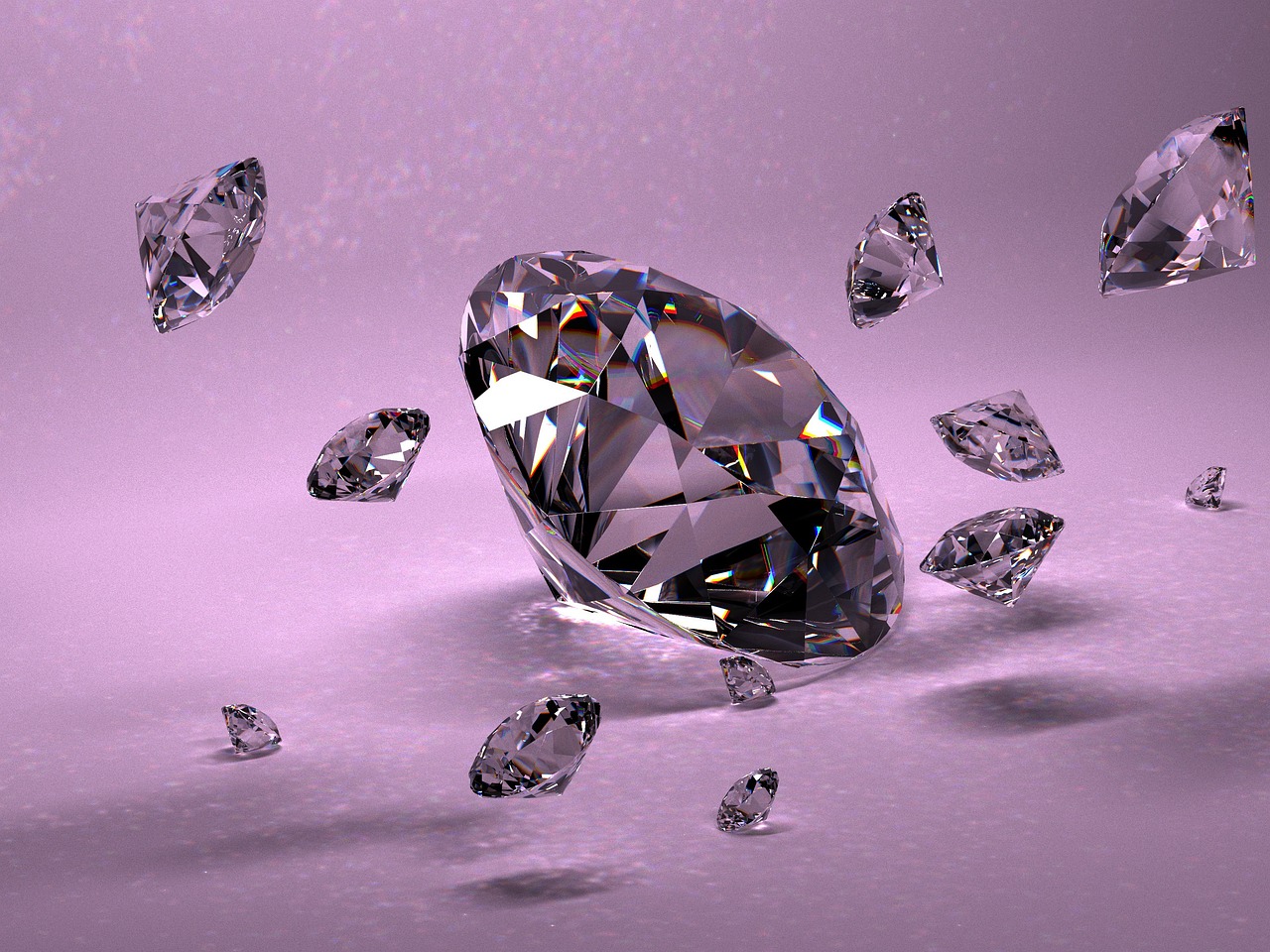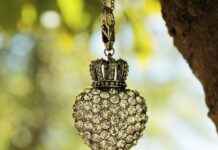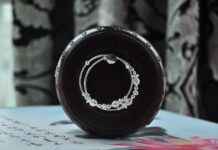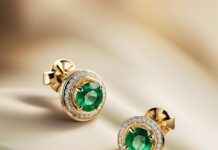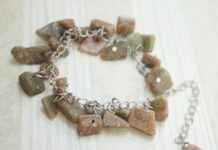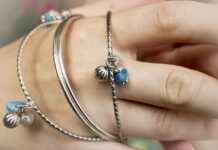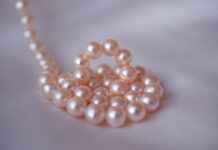This article delves into the fascinating science that explains why diamonds sparkle and exhibit brilliance. Diamonds have captivated humanity for centuries, not just for their rarity but also for their stunning visual appeal. In this exploration, we will uncover the optical properties, cutting techniques, and various factors that contribute to their mesmerizing appearance.
The Optical Properties of Diamonds
Understanding how light interacts with diamonds is crucial to appreciating their sparkle. Diamonds possess unique optical properties that enhance their brilliance. The way light enters, reflects, and exits a diamond creates an interplay of colors and flashes that is enchanting to behold.
The Role of Refraction in Diamond Brilliance
Refraction is a key aspect of how diamonds reflect light. When light passes through a diamond, it bends due to the diamond’s high refractive index. This bending of light enhances the diamond’s sparkle, allowing it to exhibit a dazzling array of colors.
Understanding the Refractive Index
The refractive index measures how much light is bent when entering a diamond. A higher refractive index indicates a greater ability to bend light, resulting in increased brilliance. This property is essential in determining how captivating a diamond can be.
The Impact of Cut on Light Performance
The cut of a diamond significantly influences its ability to refract light. Different cuts, such as the round brilliant or princess cut, have varying effects on the stone’s sparkle. An expertly cut diamond will maximize light performance, enhancing its visual appeal.
Ideal Proportions for Maximum Brilliance
Certain proportions enhance a diamond’s ability to reflect light effectively. The ideal dimensions, including table size and depth, are crucial for achieving maximum brilliance. A well-proportioned diamond will exhibit a stunning sparkle that captures attention.
The Importance of Symmetry and Polish
Symmetry and polish are critical for optimal light performance in diamonds. A diamond that is well-polished and symmetrical will have fewer light leaks, resulting in a more brilliant appearance. These factors contribute significantly to the overall aesthetic of the gemstone.
Dispersion: The Rainbow Effect
Dispersion refers to the way diamonds separate light into its component colors, creating the captivating rainbow effect. This phenomenon is what gives diamonds their unique and vibrant appearance.
Understanding Fire in Diamonds
The term fire describes the colorful flashes seen in diamonds. This visual effect occurs due to the dispersion of light, which is influenced by the diamond’s cut and quality.
The Role of Cut Quality in Dispersion
The quality of a diamond’s cut can significantly influence its dispersion properties. Different cuts can either enhance or diminish the fire effect, making the cut quality a vital aspect of a diamond’s overall beauty.
Factors Affecting Diamond Sparkle
Several external factors can impact a diamond’s sparkle. Lighting conditions and surrounding colors play a crucial role in altering the perception of brilliance. Understanding these factors can help one appreciate diamonds even more.
Natural vs. Artificial Lighting
The type of lighting can significantly affect how a diamond sparkles. Natural light often brings out the best in diamonds, while artificial lighting can create different effects. Knowing how to display diamonds under various lighting can enhance their beauty.
Surrounding Colors and Their Influence
The colors surrounding a diamond can influence its perceived brilliance. Contrasting colors can enhance or detract from a diamond’s sparkle, making the choice of setting and background important considerations.
Conclusion: The Art and Science of Diamonds
In conclusion, the interplay of optical properties, cutting techniques, and external factors creates the enchanting sparkle of diamonds. Understanding these elements not only enhances our appreciation for these precious gemstones but also helps us make informed choices when selecting them.
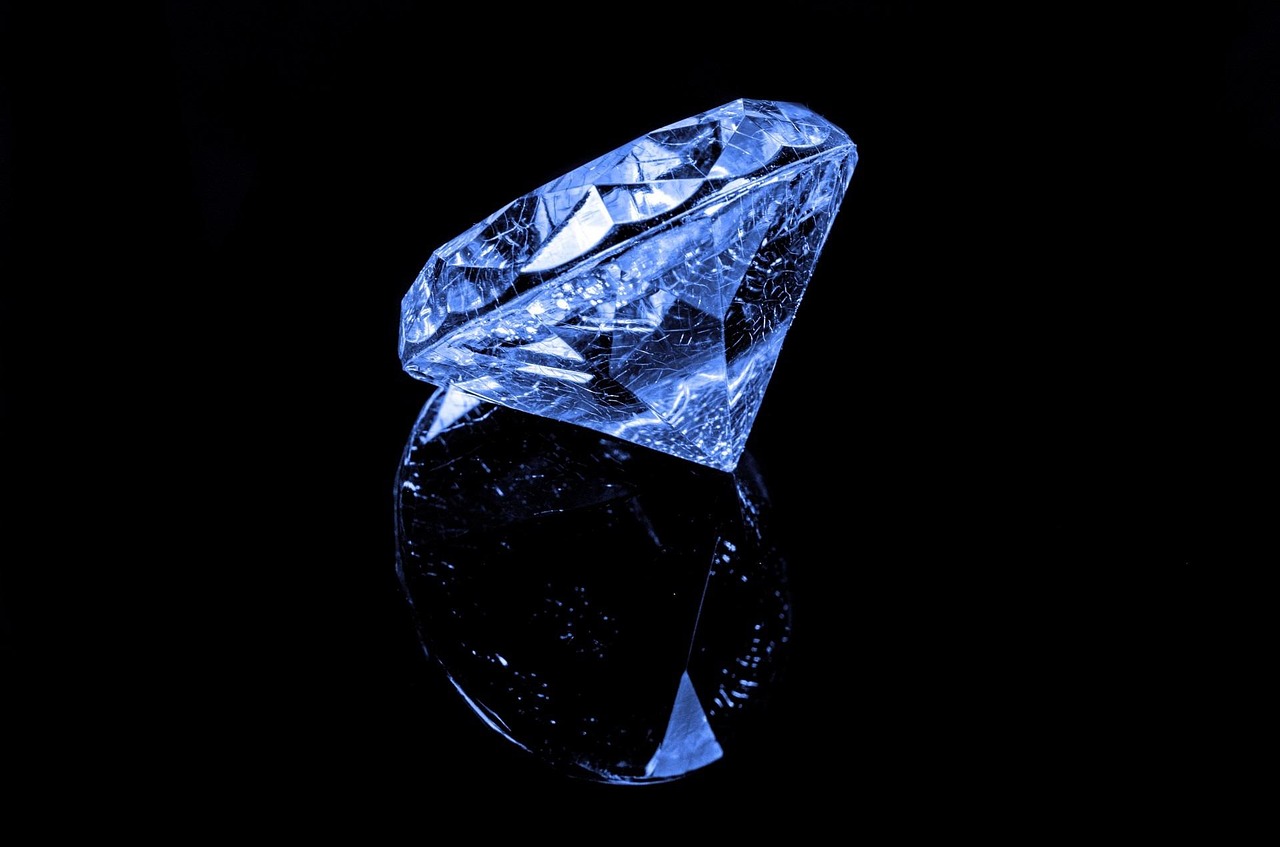
The Optical Properties of Diamonds
Understanding how light interacts with diamonds is fundamental to appreciating their stunning sparkle and brilliance. Diamonds are unique in their ability to reflect and refract light, which is essential for their captivating appearance. This section delves into the key optical properties that contribute to a diamond’s allure.
- Refraction: When light enters a diamond, it slows down and bends due to the diamond’s high refractive index. This bending of light is what creates the intense sparkle that diamonds are known for.
- Reflection: A diamond’s ability to reflect light from its facets is crucial. The more light that is reflected back to the viewer, the brighter the diamond appears. This is particularly influenced by the diamond’s cut and symmetry.
- Dispersion: Diamonds also separate light into its component colors, creating what is known as fire. This phenomenon occurs when white light passes through a diamond and is split into a spectrum of colors, resulting in a dazzling display.
Each of these properties plays a significant role in how a diamond is perceived. For instance, a well-cut diamond maximizes light entry and exit, enhancing its brilliance and fire. Conversely, a poorly cut diamond may not reflect light effectively, resulting in a lackluster appearance.
In conclusion, the optical properties of diamonds are integral to their charm. By understanding how light interacts with these precious stones, one can truly appreciate the beauty and craftsmanship that goes into creating a stunning diamond.

The Role of Refraction in Diamond Brilliance
Refraction plays a crucial role in the way diamonds exhibit their stunning sparkle. When light enters a diamond, it travels at a different speed than it does in the air, causing the light to bend. This bending of light is known as refraction, and it significantly enhances the visual appeal of diamonds.
As light passes through the diamond’s facets, it is not only refracted but also reflected internally. This combination of refraction and reflection creates a dazzling display of light that is characteristic of high-quality diamonds. The unique optical properties of diamonds allow them to manipulate light in a way that few other materials can.
To understand how refraction affects a diamond’s brilliance, we must consider the refractive index. This index measures how much light is bent as it enters the diamond. Diamonds have a high refractive index, typically around 2.42, which means they bend light significantly more than many other gemstones. This property contributes to the diamond’s ability to return light to the viewer’s eye, creating the sparkle that we associate with these precious stones.
Furthermore, the cut of the diamond is essential in maximizing its refractive qualities. Different cuts can enhance or diminish the refraction of light, ultimately affecting the diamond’s overall brilliance. For instance, a well-cut diamond will have precise angles and proportions that allow light to enter and exit effectively, maximizing its sparkle.
In summary, the interplay of refraction and the diamond’s cut is vital in creating its breathtaking brilliance. By understanding these principles, one can appreciate the intricate science behind the beauty of diamonds.
Understanding the Refractive Index
The refractive index is a fundamental property of diamonds that plays a critical role in their overall brilliance and sparkle. This measure indicates how much light is bent, or refracted, when it enters the diamond from air. The refractive index of diamond is approximately 2.42, which means that light travels about 2.42 times slower in diamond than in a vacuum. This significant bending of light is what contributes to the diamond’s captivating visual effects.
When light enters a diamond, it is not only refracted but also reflected internally. This internal reflection, combined with the high refractive index, results in the stunning brilliance that diamonds are known for. The way light interacts with the facets of the diamond is crucial; it determines how much light exits the stone and how it appears to the observer. The higher the refractive index, the more light is bent, leading to greater brilliance.
In addition to brilliance, the refractive index also influences the fire of a diamond, which refers to the dispersion of light into its component colors. The ability of a diamond to separate light into a spectrum is enhanced by its high refractive index, adding to the overall aesthetic appeal of the stone.
Moreover, the cut quality of a diamond can significantly affect how the refractive index contributes to its sparkle. A well-cut diamond optimizes the angles and proportions, ensuring that light is effectively refracted and reflected. This intricate relationship between cut and refractive index highlights the importance of skilled craftsmanship in diamond creation.
In summary, the refractive index is not just a number; it is a vital component that helps define the brilliance and beauty of a diamond. Understanding this property allows consumers and enthusiasts alike to appreciate the science behind the sparkle.
The Impact of Cut on Light Performance
The cut of a diamond is one of the most critical factors that influence its overall appearance and brilliance. Unlike other attributes such as carat weight or color, the cut directly affects how light interacts with the stone. This interaction is what gives diamonds their captivating sparkle, making them one of the most sought-after gemstones in the world.
When we talk about the cut of a diamond, we refer not only to its shape but also to the proportions, angles, and facets that have been meticulously crafted into the stone. Each of these elements plays a significant role in determining how light is refracted and reflected within the diamond.
| Cut Type | Characteristics | Impact on Sparkle |
|---|---|---|
| Round | Classic shape with 58 facets | Maximizes brilliance and fire |
| Princess | Square shape with pointed corners | Offers a modern look with excellent light performance |
| Emerald | Rectangular shape with step cuts | Emphasizes clarity over sparkle |
| Oval | Elongated shape that can appear larger | Creates a unique sparkle with a twist |
Each cut has its unique characteristics, and understanding these can help consumers make informed choices. For instance, the round cut is renowned for its ability to reflect light brilliantly, often regarded as the ideal choice for those seeking maximum sparkle. In contrast, the emerald cut may not exhibit the same level of brilliance, but its elegant lines highlight the diamond’s clarity.
Moreover, the proportions of the cut are equally important. A well-proportioned diamond will reflect light more effectively, enhancing its overall brilliance. Conversely, poorly cut diamonds can appear dull, regardless of their carat weight or color.
In conclusion, the cut of a diamond is paramount in determining its light performance and overall beauty. By selecting a diamond with an excellent cut, one can ensure that the stone will exhibit the maximum sparkle and brilliance, making it a treasured piece for years to come.
Ideal Proportions for Maximum Brilliance
When it comes to diamonds, the cut plays a pivotal role in determining their overall brilliance and sparkle. The proportions of a diamond affect how light enters, reflects, and exits the stone, ultimately influencing its visual appeal. Understanding these ideal dimensions is essential for anyone looking to appreciate or purchase a diamond.
The most significant proportions include the table size, crown angle, pavilion depth, and girdle thickness. Each of these elements contributes to how light interacts with the diamond:
- Table Size: The table is the flat surface on the top of the diamond. An ideal table size is typically between 53% and 58% of the diamond’s overall diameter. This proportion allows for optimal light entry, enhancing brilliance.
- Crown Angle: The crown refers to the upper portion of the diamond above the girdle. A crown angle between 34° and 35° is often considered ideal, as it maximizes the light reflection from the diamond’s surface.
- Pavilion Depth: The pavilion is the lower part of the diamond. An ideal pavilion depth ranges from 43% to 45% of the total depth. This proportion ensures that light is effectively reflected back to the viewer’s eye.
- Girdle Thickness: The girdle is the edge that separates the crown and pavilion. A medium girdle thickness is advisable, as it provides durability without compromising light performance.
Achieving the right balance of these proportions is crucial for maximizing a diamond’s brilliance. When these dimensions are optimized, the diamond can effectively reflect and refract light, resulting in a captivating sparkle that draws the eye.
In conclusion, understanding the ideal proportions of diamonds not only enhances appreciation for these beautiful gemstones but also guides consumers in making informed purchasing decisions. By focusing on these key dimensions, one can ensure that the diamond exhibits the maximum brilliance and allure.
The Importance of Symmetry and Polish
is a critical aspect of a diamond’s overall beauty and performance. These two factors play a significant role in how light interacts with the stone, ultimately affecting its brilliance and sparkle.
Symmetry refers to the precise alignment and proportion of a diamond’s facets. When a diamond is cut with perfect symmetry, light enters and exits the stone uniformly, creating a more vibrant and captivating appearance. Any deviations in symmetry can lead to uneven light distribution, resulting in a diminished sparkle. Therefore, achieving high symmetry is essential for maximizing a diamond’s visual appeal.
Polish, on the other hand, pertains to the smoothness of a diamond’s surface. A well-polished diamond reflects light more effectively than one with a rough or poorly finished surface. The polish enhances the diamond’s ability to shine, adding to its overall brilliance. Surface imperfections can scatter light, leading to a less desirable appearance. Hence, a high-quality polish is vital for achieving that sought-after sparkle.
| Factor | Impact on Light Performance |
|---|---|
| Symmetry | Ensures even light distribution, enhancing brilliance |
| Polish | Improves surface reflection, increasing sparkle |
In summary, both symmetry and polish are indispensable for optimal light performance in diamonds. They not only contribute to the stone’s aesthetic appeal but also play a crucial role in how a diamond is perceived in various lighting conditions. By understanding the importance of these factors, buyers can make more informed decisions when selecting their perfect diamond.
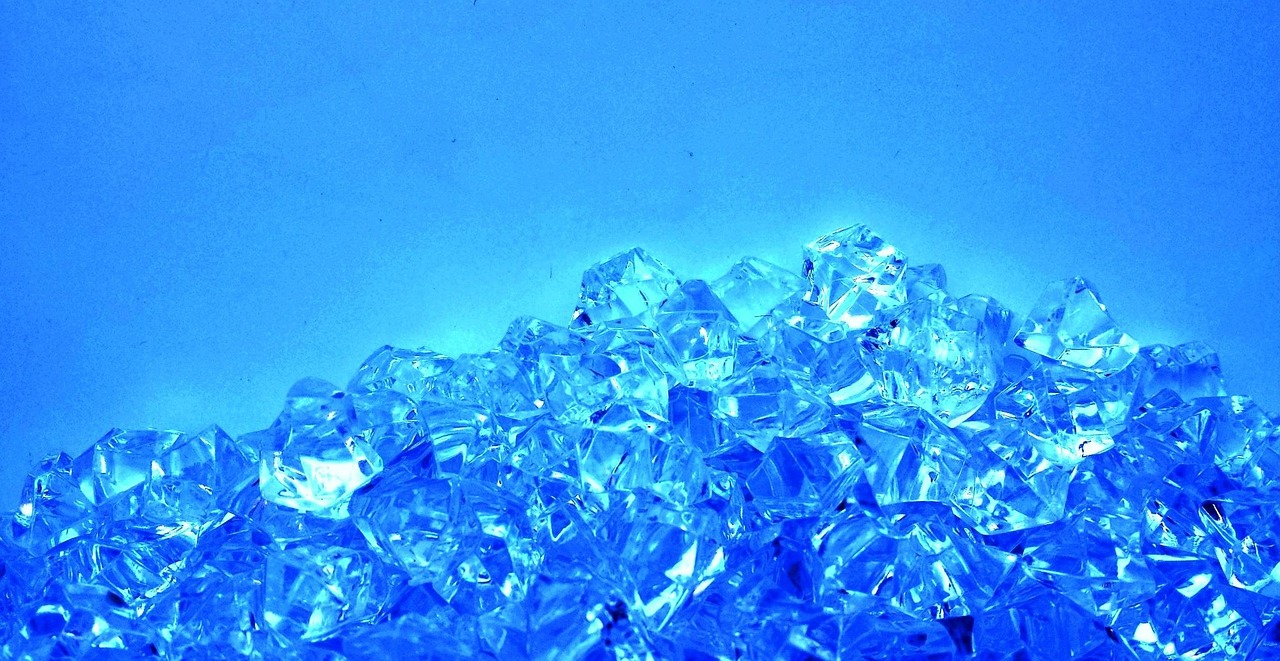
Dispersion: The Rainbow Effect
Dispersion is a remarkable phenomenon that occurs when light interacts with diamonds, leading to a breathtaking display of colors. This effect, often referred to as the rainbow effect, is a key characteristic that enhances the beauty of diamonds, making them highly sought after in jewelry.
When light enters a diamond, it doesn’t just pass through; instead, it is bent and separated into its constituent colors due to the diamond’s unique optical properties. This process is known as refraction. Each color of light has a different wavelength and, as a result, is refracted at different angles. This separation of light creates the stunning spectrum of colors that we associate with the term fire in diamonds.
| Color | Wavelength (nm) |
|---|---|
| Red | 620-750 |
| Orange | 590-620 |
| Yellow | 570-590 |
| Green | 495-570 |
| Blue | 450-495 |
| Indigo | 425-450 |
| Violet | 380-425 |
The cut quality of a diamond plays a crucial role in how effectively it can disperse light. Diamonds that are cut with precise angles and proportions are better at enhancing the fire effect, allowing for a more vibrant display of colors. Conversely, poorly cut diamonds may not exhibit the same level of brilliance, as they fail to maximize light entry and reflection.
In summary, the dispersion of light in diamonds creates the captivating rainbow effect that enchants observers. Understanding this phenomenon not only deepens our appreciation for diamonds but also highlights the importance of cut quality in achieving their stunning visual appeal.
Understanding Fire in Diamonds
is a captivating topic that delves into the unique optical phenomenon observed in these precious stones. The term “fire” refers to the colorful flashes of light that emerge when a diamond is exposed to light. This stunning effect is a result of the diamond’s ability to disperse light into its constituent colors, creating a visual spectacle that is both mesmerizing and enchanting.
To fully appreciate the fire in diamonds, it is essential to understand the science behind it. When light enters a diamond, it is refracted and then dispersed, resulting in a spectrum of colors. This process is primarily influenced by the diamond’s refractive index, which measures how much the light bends as it passes through the stone. Diamonds possess a high refractive index, which enhances their ability to split light into different colors, creating that beautiful rainbow effect.
The quality of the cut also plays a pivotal role in determining the intensity of a diamond’s fire. A well-cut diamond will have precise angles and proportions that allow light to enter and exit optimally, enhancing the dispersion of colors. Conversely, a poorly cut diamond may not exhibit the same level of fire, as light may escape without creating the desired colorful flashes.
| Cut Quality | Effect on Fire |
|---|---|
| Excellent | Maximizes fire and brilliance |
| Good | Displays noticeable fire |
| Fair | Limited fire visibility |
| Poor | Minimal to no fire |
In conclusion, the fire of a diamond is not merely a visual effect; it is a complex interplay of light, cut quality, and optical properties. By understanding these elements, one can truly appreciate the breathtaking beauty of diamonds and the science that makes them so unique.
fire
The Science Behind Diamond Sparkle and Brilliance
This article delves into the fascinating science that explains why diamonds sparkle and exhibit brilliance. We will explore the optical properties, cutting techniques, and factors that contribute to their mesmerizing appearance.
The Optical Properties of Diamonds
Understanding how light interacts with diamonds is crucial to appreciating their sparkle. This section discusses the fundamental optical properties that contribute to a diamond’s brilliance.
The Role of Refraction in Diamond Brilliance
Refraction is a key aspect of how diamonds reflect light. This section explains the process of light bending as it passes through a diamond, enhancing its sparkle.
- Understanding the Refractive Index: The refractive index is a measure of how much light is bent when entering a diamond. This subsection explores its significance in determining a diamond’s brilliance.
- The Impact of Cut on Light Performance: The cut of a diamond significantly influences how light is refracted. Here, we discuss the various cuts and their effects on the stone’s sparkle.
- Ideal Proportions for Maximum Brilliance: Certain proportions enhance a diamond’s ability to reflect light. This section outlines the ideal dimensions for achieving maximum brilliance in diamonds.
The Importance of Symmetry and Polish
Symmetry and polish are crucial for optimal light performance in diamonds. This subsection examines how these factors contribute to the overall appearance of a diamond.
Dispersion: The Rainbow Effect
Dispersion refers to the way diamonds separate light into its component colors. This section delves into how this phenomenon creates the captivating rainbow effect seen in diamonds.
- Understanding Fire in Diamonds: The term describes the colorful flashes seen in diamonds. This subsection explains the science behind this captivating visual effect.
- The Role of Cut Quality in Dispersion: The quality of a diamond’s cut can influence its dispersion properties. Here, we explore how different cuts can enhance or diminish the fire effect.
Factors Affecting Diamond Sparkle
Several external factors can impact a diamond’s sparkle. This section discusses elements such as lighting conditions and surrounding colors that can alter the perception of brilliance.
- Natural vs. Artificial Lighting: The type of lighting can significantly affect how a diamond sparkles. This subsection compares natural and artificial lighting and their effects on a diamond’s appearance.
- Surrounding Colors and Their Influence: The colors surrounding a diamond can influence its perceived brilliance. This section examines how contrasting colors can enhance or detract from a diamond’s sparkle.
Conclusion: The Art and Science of Diamonds
In conclusion, the interplay of optical properties, cutting techniques, and external factors creates the enchanting sparkle of diamonds. Understanding these elements enhances appreciation for these precious gemstones.
describes the colorful flashes seen in diamonds. This subsection explains the science behind this captivating visual effect.
The Science Behind Diamond Sparkle and Brilliance
This article delves into the fascinating science that explains why diamonds sparkle and exhibit brilliance. We will explore the optical properties, cutting techniques, and factors that contribute to their mesmerizing appearance.
The Optical Properties of Diamonds
Understanding how light interacts with diamonds is crucial to appreciating their sparkle. The fundamental optical properties that contribute to a diamond’s brilliance include:
- Refraction: The bending of light as it passes through the diamond.
- Dispersion: The separation of light into its component colors.
- Reflection: The bouncing of light off the diamond’s surfaces.
The Role of Refraction in Diamond Brilliance
Refraction is a key aspect of how diamonds reflect light. When light enters a diamond, it bends due to the diamond’s high refractive index, which enhances its sparkle.
Understanding the Refractive Index
The refractive index measures how much light bends when entering a diamond. A higher refractive index indicates a greater ability to bend light, contributing significantly to a diamond’s brilliance.
The Impact of Cut on Light Performance
The cut of a diamond significantly influences how light is refracted. Various cuts can enhance or diminish the stone’s sparkle. Ideal proportions are crucial for achieving maximum brilliance.
Ideal Proportions for Maximum Brilliance
Certain proportions enhance a diamond’s ability to reflect light. For instance, the ideal table size and depth can maximize light reflection and refraction.
The Importance of Symmetry and Polish
Symmetry and polish are crucial for optimal light performance in diamonds. Well-cut diamonds exhibit better light return, enhancing their overall appearance.
Dispersion: The Rainbow Effect
Dispersion refers to how diamonds separate light into its component colors. This phenomenon creates the captivating rainbow effect seen in diamonds.
Understanding Fire in Diamonds
The term fire describes the colorful flashes seen in diamonds. This captivating visual effect occurs due to the dispersion of light into various colors.
The Role of Cut Quality in Dispersion
The quality of a diamond’s cut can influence its dispersion properties. Different cuts can enhance or diminish the fire effect, impacting the diamond’s overall allure.
Factors Affecting Diamond Sparkle
Several external factors can impact a diamond’s sparkle, including:
- Natural vs. Artificial Lighting: The type of lighting can significantly affect how a diamond sparkles.
- Surrounding Colors: The colors surrounding a diamond can influence its perceived brilliance.
Conclusion: The Art and Science of Diamonds
In conclusion, the interplay of optical properties, cutting techniques, and external factors creates the enchanting sparkle of diamonds. Understanding these elements enhances appreciation for these precious gemstones.
The Role of Cut Quality in Dispersion
The quality of a diamond’s cut plays a pivotal role in its overall appearance and performance, particularly in how it disperses light. Dispersion, often referred to as the “fire” of a diamond, is the phenomenon where white light is separated into its spectral colors. This captivating effect is not merely a byproduct of the diamond’s material; rather, it is significantly influenced by the diamond’s cut.
When we talk about the cut quality, we are referring to the precision with which a diamond has been shaped and polished. This includes factors such as the angles, proportions, and symmetry of the facets. Each of these elements can either enhance or diminish the diamond’s ability to refract and disperse light.
Different Cuts and Their Impact
- Round Brilliant Cut: This is the most popular cut, designed specifically to maximize brilliance and fire. Its ideal proportions allow for optimal light return, resulting in exceptional sparkle and vibrant color dispersion.
- Princess Cut: Known for its modern appeal, the princess cut also offers substantial fire, though its sharp corners can sometimes limit light return if not cut correctly.
- Emerald Cut: This cut features a larger table and fewer facets, which can result in less fire compared to brilliant cuts. However, its unique step-cut design produces a different kind of allure.
- Asscher Cut: Similar to the emerald cut but square in shape, it offers a vintage charm. Its cut can produce beautiful flashes of light but may lack the fire of a round brilliant cut.
The proportions of a diamond also matter. For example, a diamond with too shallow or too deep a cut can fail to reflect light effectively, resulting in a dull appearance. Therefore, achieving the ideal balance in cut quality is essential for maximizing dispersion and enhancing the diamond’s fire effect.
In summary, the cut quality of a diamond is crucial in determining its dispersion properties. A well-cut diamond will exhibit a stunning play of colors, captivating the observer with its brilliance and fire. Understanding the impact of cut quality not only helps in choosing the right diamond but also deepens the appreciation for these exquisite gemstones.
Factors Affecting Diamond Sparkle
The sparkle of a diamond is not solely a product of its inherent qualities; rather, it is significantly influenced by various external factors. Understanding these elements can enhance the appreciation of a diamond’s beauty and brilliance.
- Lighting Conditions: The type and quality of lighting play a crucial role in how a diamond sparkles. Natural light, especially sunlight, can enhance a diamond’s brilliance, allowing it to reflect and refract light optimally. In contrast, artificial lighting may not always replicate this effect, leading to a different appearance.
- Natural vs. Artificial Lighting: Natural light provides a broad spectrum of illumination, which can bring out the best in a diamond. On the other hand, artificial lighting, such as fluorescent or incandescent bulbs, can create shadows and alter the perceived color of the diamond, affecting its sparkle.
- Surrounding Colors: The colors that surround a diamond can also significantly influence its appearance. A diamond placed against a contrasting background may appear more brilliant than one set against a similar color. For instance, a white diamond can look more vibrant when placed on a black velvet cloth.
- Environmental Factors: The ambiance of the environment, including the presence of other reflective surfaces, can affect how light interacts with a diamond. A well-lit, open space can enhance the sparkle, while a dimly lit or cluttered area may diminish its brilliance.
In conclusion, the interplay of lighting conditions and surrounding colors can dramatically alter the perception of a diamond’s sparkle. By understanding these factors, one can better appreciate the beauty and brilliance that diamonds offer.
Natural vs. Artificial Lighting
The way a diamond sparkles can be dramatically influenced by the type of lighting in which it is viewed. Understanding the differences between natural and artificial lighting is essential for appreciating the true beauty of a diamond.
Natural Lighting
- Natural light, particularly sunlight, provides a broad spectrum of wavelengths that enhance a diamond’s brilliance.
- When exposed to sunlight, diamonds exhibit a dazzling array of colors due to the dispersion of light, creating a captivating visual effect.
- Outdoors, diamonds can reflect and refract light in ways that highlight their cut and clarity, often making them appear more vibrant.
Artificial Lighting
- Artificial lighting, such as incandescent or fluorescent lights, can alter the appearance of a diamond significantly.
- Incandescent lights tend to emit a warm glow, which can enhance the yellowish hues in a diamond, potentially diminishing its perceived brilliance.
- Fluorescent lighting, on the other hand, can create a cooler, bluish tint, which may enhance some diamonds but can also mask their true colors.
Comparative Analysis
| Lighting Type | Effect on Diamond |
|---|---|
| Natural Light | Enhances brilliance and color dispersion |
| Incandescent Light | Can highlight warmth, may reduce overall sparkle |
| Fluorescent Light | May enhance some colors, but can distort true appearance |
In conclusion, the lighting conditions under which a diamond is viewed play a crucial role in its overall appearance. Natural light generally offers the best conditions for showcasing a diamond’s brilliance, while artificial lighting can introduce variations that may either enhance or detract from its beauty. Understanding these differences allows potential buyers to make informed decisions when selecting their perfect diamond.
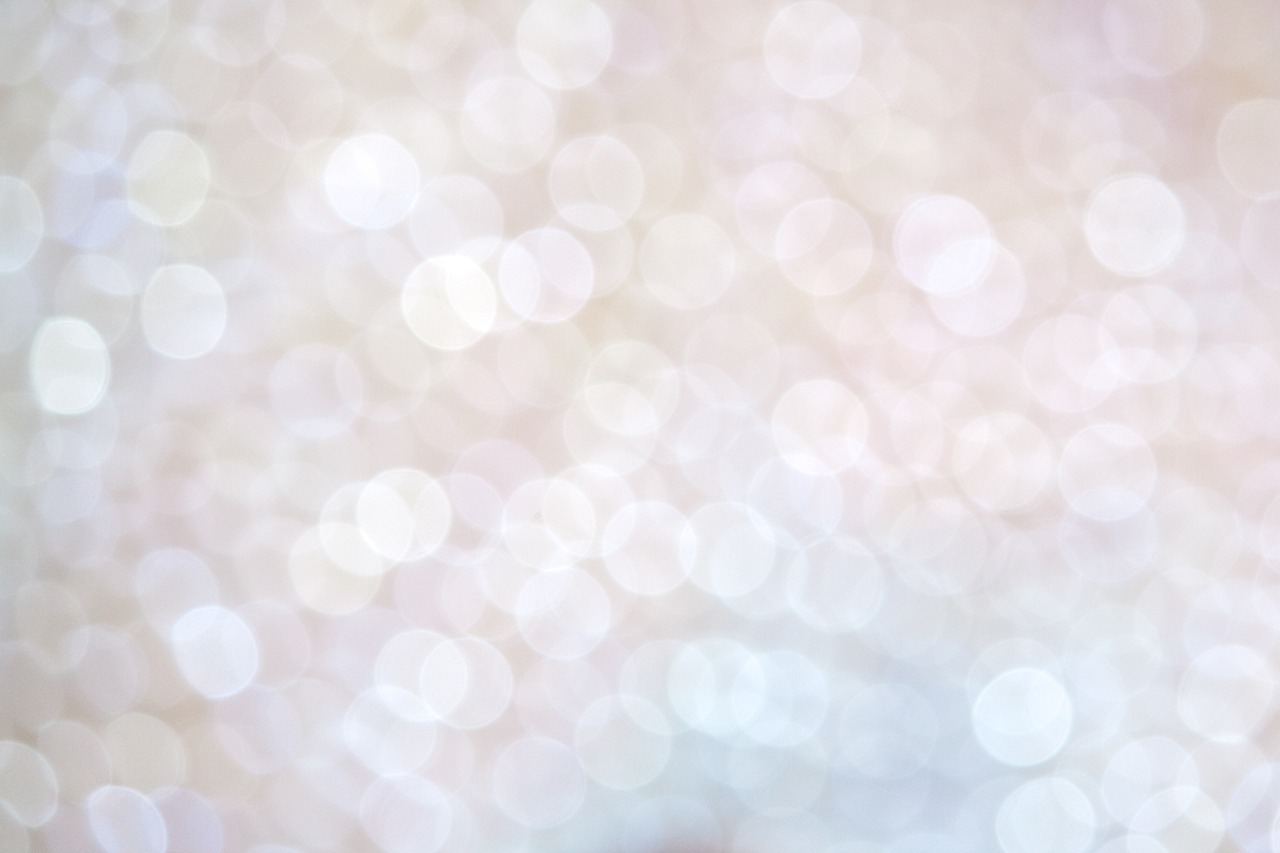
Surrounding Colors and Their Influence
Surrounding colors play a significant role in how a diamond’s brilliance is perceived. The interplay between a diamond and its background can either enhance or diminish its sparkle, creating a fascinating visual experience. This section explores the influence of contrasting colors on a diamond’s appearance, shedding light on how these colors can affect our perception of its beauty.
When a diamond is placed against a dark background, its brilliance often appears more pronounced. The contrast between the diamond’s sparkling facets and the dark color can create a striking visual effect, allowing the diamond to stand out. This is particularly evident in settings where the diamond is showcased against black velvet or deep-colored fabrics. The absence of color around the diamond allows the light to reflect more effectively, enhancing its overall brilliance.
Conversely, placing a diamond against a light or neutral background can sometimes wash out its sparkle. Light colors may not provide the same level of contrast, leading to a less vibrant appearance. For instance, a diamond set in a white gold or platinum setting may blend with the surrounding colors, making it appear less brilliant than when set against a darker backdrop.
Furthermore, the color temperature of the surrounding environment can also influence a diamond’s appearance. Warm colors, such as gold or yellow, can enhance the warmth of a diamond, especially if it has yellow undertones. In contrast, cooler colors, like silver or blue, can make a diamond appear whiter and more brilliant. This effect is particularly noticeable in diamonds with high clarity and excellent cut quality.
In conclusion, the colors surrounding a diamond are not just a matter of aesthetics; they play a crucial role in how we perceive its brilliance. By understanding the effects of contrasting colors, one can make informed decisions about diamond settings and displays, ultimately enhancing the overall visual impact of these exquisite gemstones.
Conclusion: The Art and Science of Diamonds
In summary, the mesmerizing sparkle of diamonds is a result of a complex interplay between various factors, including their optical properties, the precision of their cutting techniques, and the influence of external conditions. Each of these elements plays a crucial role in how light interacts with the diamond, ultimately affecting its brilliance and overall aesthetic appeal.
The optical properties of diamonds, such as their refractive index and dispersion capabilities, are foundational to understanding their unique ability to reflect light. When light enters a diamond, it bends due to the high refractive index, creating a stunning visual effect that is hard to replicate in other gemstones. This bending of light is further enhanced by the diamond’s cut, which determines how well the stone can reflect and refract light.
Moreover, the quality of the cut is paramount. A well-cut diamond maximizes light performance by ensuring that light enters and exits the stone in a way that enhances its sparkle. Ideal proportions and symmetry contribute to this effect, allowing for optimal light interaction. In addition, the polish of the diamond’s surface affects how light is reflected, adding to the overall brilliance.
Beyond the physical characteristics of diamonds, external factors such as lighting conditions and surrounding colors also play a significant role in how a diamond sparkles. Natural light tends to enhance the diamond’s brilliance more effectively than artificial lighting, while contrasting colors can either amplify or diminish the perceived sparkle of the stone.
In conclusion, the enchanting sparkle of diamonds is not merely a matter of chance; it is a sophisticated blend of science and artistry. By understanding the intricate details of how diamonds interact with light, one can truly appreciate these precious gemstones and the mastery involved in their creation.
Frequently Asked Questions
- What causes a diamond to sparkle?
The sparkle of a diamond is primarily due to its ability to refract and reflect light. When light enters the diamond, it bends and reflects off the internal facets, creating that mesmerizing brilliance we all adore.
- How does the cut of a diamond affect its brilliance?
The cut of a diamond is crucial as it determines how well the stone can reflect light. A well-cut diamond will have ideal proportions and symmetry, allowing it to maximize its sparkle and brilliance.
- What is the significance of the refractive index?
The refractive index measures how much light is bent when it enters the diamond. A higher refractive index means more light is captured within the stone, enhancing its sparkle.
- Can lighting conditions affect how a diamond appears?
Absolutely! Natural light tends to enhance a diamond’s sparkle more than artificial lighting. The type of light can significantly change how we perceive a diamond’s brilliance.
- What is dispersion in diamonds?
Dispersion refers to the way diamonds separate light into its component colors, creating the beautiful rainbow effect known as “fire.” This phenomenon adds to the overall allure of a diamond.

